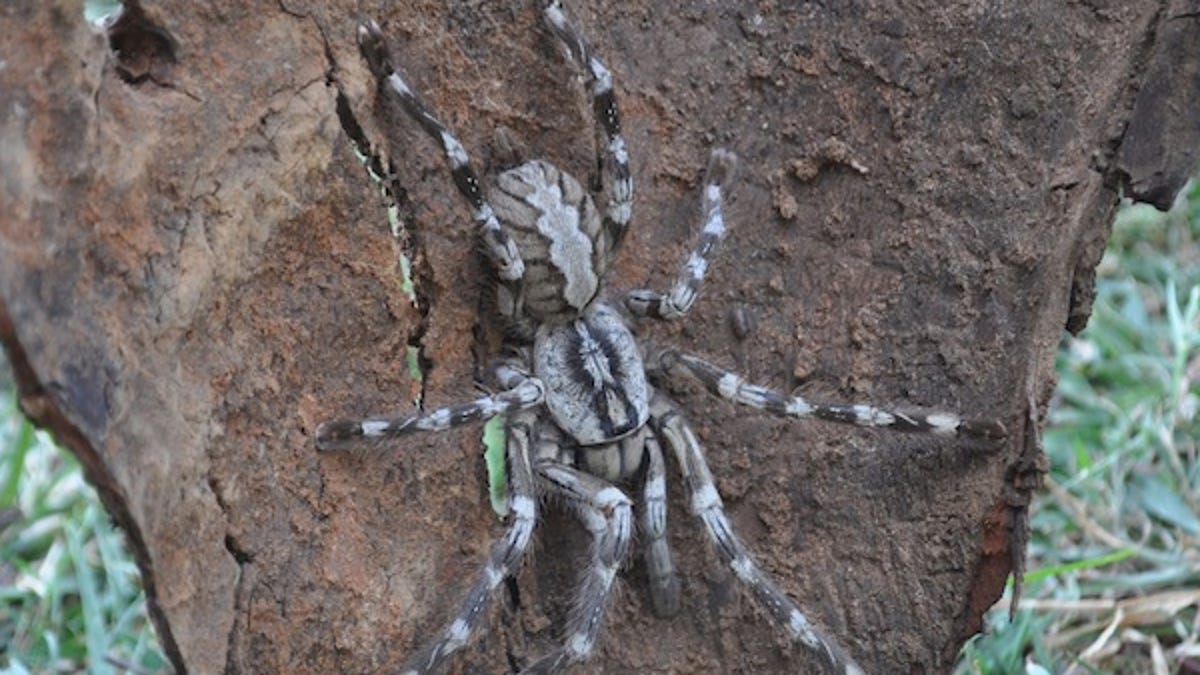New species of giant tarantula is as big as your face
A new species of giant venomous tarantula has been discovered in the north of Sri Lanka.

(Credit: British Tarantula Society/Ranil Nanayakkara)
A new species of giant venomous tarantula has been discovered in the north of Sri Lanka.
We have some pretty scary arachnids here in Australia, but that's less to do with their size and more to do with the fact that a few of them can kill you with a single bite. What we do not have is something like a recently discovered giant tarantula in northern Sri Lanka.
The discovery is attributed to Ranil Nanayakkara, co-founder of Sri Lanka's Biodiversity Education and Research (BER). He was presented with a male corpse of the spider by a local villager in 2009, and Nanayakkara recognised that the spider's body, with a leg span of eight inches, a pink band below its abdomen and yellow markings on its legs, looked unlike anything he had seen in the area.
It took a lot of work to discover more about the species, combing the area for females and juveniles, before it could be accurately described. For help navigating the forest, Nanayakkara enlisted the aid of local police inspector, Michael Rajakumar Purajah — for whom the spider ended up being partially named.
Poecilotheria rajaei (or "pokies" for short) were found living in ruined buildings. Nanayakkara told Wired, "They are quite rare. They prefer well-established old trees, but due to deforestation, the number have dwindled, and due to lack of suitable habitat, they enter old buildings."
Up to 15 species are thought to belong to Poecilotheria; but, thanks to deforestation, several are critically endangered, including the stunningly beautiful Poecilotheria metallica.
However, since DNA sampling hasn't been performed, it is not certain whether Poecilotheria is a newly discovered species or a newly discovered variant of an already known species.
To be honest, whatever it is, we rather think we'd almost prefer the Poecilotheria rajaei to the funnel-web; at least you wouldn't have to be quite so concerned with what may or may not have crawled into our shoes overnight. Especially the metallica. That thing is incredible.
CNET Australia would like to offer a heartfelt apology to any arachnophobes who found their way to this article. Although, with "giant tarantula" in the headline, we're not entirely sure what you were expecting.
Via www.wired.com

